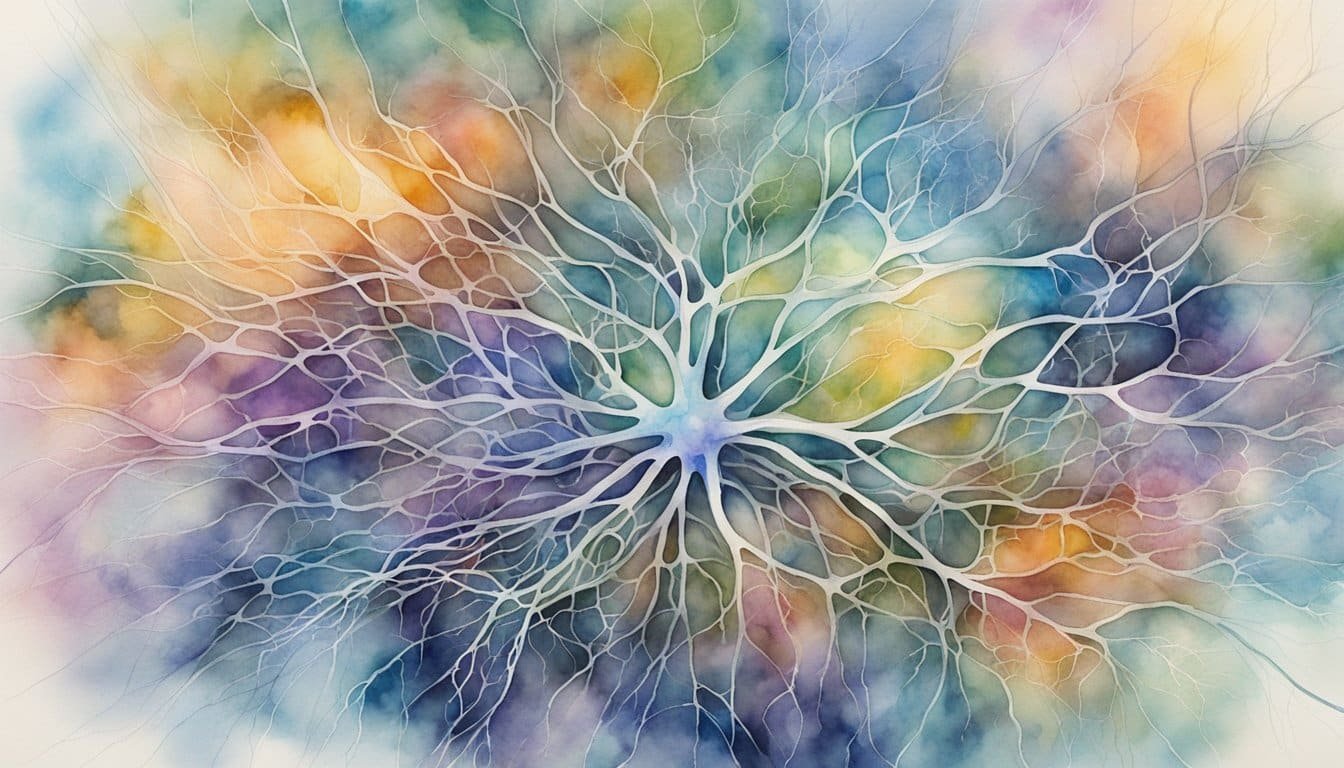Brain Memory Basics
Understanding the human brain’s memory capacity is like exploring an intricate network bustling with activity. Each memory, from the name of a childhood friend to the scent of a favorite food, finds a home within this complex system.
Neuroscience Foundations
The brain is a masterpiece of biology composed of billions of neurons, each interlinked by synapses. It’s this vast network that forms the basis for the brain’s stunning storage capacity. Think of neurons as the brain’s writers, jotting down every detail of your life, while synapses serve as the glue, connecting and strengthening each memory. The hippocampus plays the star role in consolidating short-term memory into long-term storage, ensuring that the important moments stick around for the long haul.
- Neurons: Brain cells responsible for transmitting information.
- Synapses: Junctions between neurons where information transfer occurs through neurotransmitters.
- Hippocampus: The region of the brain crucial for memory formation.
Memory Types
The human brain categorizes memories into different types, each with its unique way of processing and storage. Short-term memory holds information for a brief period, like a temporary sticky note in the brain, whereas sensory memory acts as a fleeting snapshot of sensory information. Contrary to popular belief, the brain’s storage capacity isn’t a matter of gigabytes or terabytes, but rather is thought to be almost limitless, with the potential to hold a lifetime of memories thanks to the dynamic nature of brain cell connections.
- Sensory Memory: Lasts for a very short time and typically goes unprocessed.
- Short-Term Memory: Information that is currently active or in use.
Given the brain’s propensity to weave memories with emotional threads, it’s not just the facts they remember, but the feelings associated with them. Isn’t it fascinating to realize that every book you’ve read, every laugh you’ve shared, and every awe-inspiring sunset you’ve seen may have contributed a unique pattern to your brain’s miraculous tapestry of memories?
Quantifying Brain Capacity

Understanding how much information the brain can hold involves delving into the intriguing and complex realm of neuroscience. This section will journey through the various methodologies used to measure the brain’s capacity and compare it to technological counterparts.
The Measurements of Mind
The human brain’s capacity for information is astonishingly vast. With the cerebral cortex playing a key role in memory and thought, it is often compared to technological data storage. Scientists estimate that the brain can store approximately a petabyte of data. This is akin to about 1,000 terabytes or a quadrillion bytes – numbers that are truly mind-boggling when considering this storage is within a single human brain.
These measurements, however, are complex and not directly comparable to a computer’s gigabytes and terabytes as the brain encodes and processes information through networks of neurons in an incredibly energy-efficient manner.
Comparisons to Technology
When drawing parallels between the brain and technology, the comparison often falls short. A brain can do far more than what computers are capable of, not just in terms of memory storage capacity but also in processing sensory information and navigating complex social interactions. A modern computer can hold literally millions of books worth of data, but the brain’s ability to process and synthesize information makes it far superior to even the most advanced machines.
However, physical limit does exist. Just like any storage device, there’s only so much the brain can hold. But unlike computers, which store information in binary code, the brain uses a rich tapestry of chemicals and electrical impulses, making it much more versatile and efficient than its silicon counterparts.
Scientific Insights and Future Research

The human brain’s capacity for information has always fascinated scientists, inspiring a mix of awe and a multitude of questions. How does the brain store memories, and just how much can it hold? Pivotal research and the potential of future studies promise to uncover more layers behind these mysteries.
Pioneering Studies
Researchers like Paul Reber from Northwestern University suggest that the brain can hold up to a petabyte of information. This estimate is akin to the capacity of some of the largest digital storage systems in the world. Tom Bartol and colleagues at the Salk Institute used advanced microscopy techniques to study the synapses in a rat hippocampus, revealing that synaptic sizes could vary by as much as a factor of 60 percent, suggesting that the brain might have an even higher capacity than previously estimated. These findings underscore the incredible precision of neural structures like axons and dendritic spines in encoding memories.
Impacts of External Factors
External factors, such as the consumption of substances like alcohol, can notably alter the brain’s ability to store information. Studies funded by the NIH indicate that substances affecting the central nervous system can lead to changes in the structure and function of neural connections. On the other hand, the impact of positive external stimuli on the brain’s informational capacity is an area ripe for research with implications for educational practices and cognitive enhancement strategies. Future work may provide insights into how these influences can modify synaptic efficacy and what that means for the limits of human memory.

